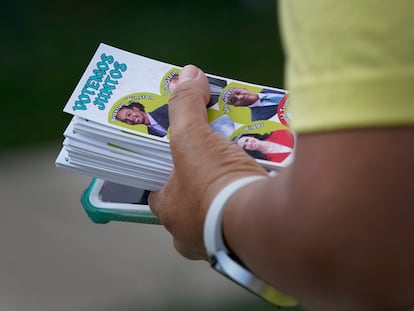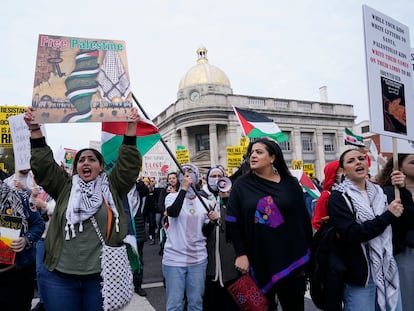US elections 2024: Where to vote, when polls open and how to mark the ballot
November 5 is Election Day. Here are some basic voting guidelines
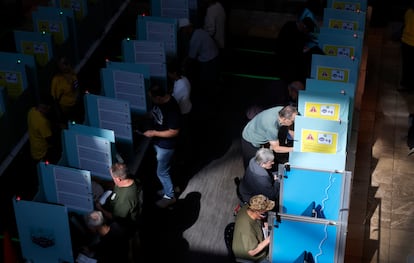

With the U.S. presidential election just around the corner, millions of Americans are preparing to go to the polls to decide the country’s next leader. Vice President Kamala Harris and Minnesota Governor Tim Walz face off against former president Donald Trump and Senator J. D. Vance in a race that most polls show to be virtually tied. Voting procedures and rules vary from state to state, but there are some general guidelines and tips to follow no matter where citizens will be voting. Below, we explain the key information for Election Day and how to exercise your right to vote.
Where to vote
The polling place for each person is usually determined by their residential address, and can be found by using their state or county elections office website, visiting Vote.org or the U.S. Election Assistance Commission website. In many areas, polling places are set up in public buildings such as schools, community centers, churches or municipal buildings. It is important to confirm the polling location in advance, as locations change from previous years due to school schedules, building availability or other factors. Likewise, it is important to check your registration status before you go to vote, as some states may have voter ID requirements or other stipulations that should be taken into consideration.
What time do polls open and close?
Generally, election hours in the United States range from early morning to late evening, with many polling places opening between 6:00 a.m. and 8:00 a.m. and closing between 7:00 p.m. and 9:00 p.m. The exact hours are determined by each state and sometimes even vary by county. However, the exact hours are determined by each state and sometimes vary even by county. For example, polling stations in New York usually open at 6 a.m. and close at 9 p.m., while in California, they open at 7 a.m. and close at 8 p.m. If someone is standing in line at the polling place when it closes, they’re still entitled to cast their vote as long as they were in line before the official closing time.
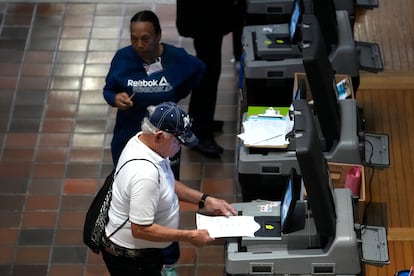
What documents do I need?
Although most states do not require identification, some do. You need to check the voter ID laws of the state in which you are voting to make sure if they ask for certain documents. For example, Georgia, Indiana and Wisconsin require a government-issued photo ID, while others, such as Colorado and Florida, allow voters to present utility bills or other forms of identification. It is always a good idea to carry an ID, even if the state does not strictly require it.
If someone is registered to vote but does not appear on the voter list due to an error, they may be given a provisional ballot. This ballot allows you to cast a vote, which will be counted once your eligibility is confirmed. Provisional ballots ensure that no voter is turned away due to administrative problems.
How to mark your ballot
Ballot formats may vary, here are some of the most common ones and how they should be filled out:
- Paper ballots: They are marked manually by filling in an oval or by connecting a line next to the name of the candidate of choice. It is advisable to read the instructions carefully and double check each mark before sending the ballot. In states that use paper ballots, they are either scanned electronically or deposited directly into a secure ballot box for later counting.
- Touchscreen machines: Many states use electronic touchscreens to simplify voting, especially for people with disabilities. If a touch screen is used, it is necessary to confirm selections on the review screen before finishing. Some machines print a paper record that can be reviewed; if it does not match the choices made, assistance can be sought from a poll worker.
- Ballot marking devices: Some states use machines that allow selections to be made electronically and then a ballot is printed and can be sent for counting. The ballot can be reviewed before it is mailed to ensure that it reflects the voter’s choices.
Most ballots will contain choices for presidential candidates, congressional representatives, and state and local offices, as well as area-specific propositions or measures. Often, voting on ballot measures is simply a matter of checking “Yes” or “No,” so it is advisable to review the selection before moving on to the next section.

Common mistakes
It is easy to make a mistake when filling out the ballot, especially if you are voting under time pressure. Here are some basic tips to avoid making an incorrect selection.
- Follow the instructions exactly: Different voting systems may have unique rules on how to mark the ballot, so be sure to fill it out correctly.
- Do not overvote: Voting for more candidates than allowed in a single category may invalidate your vote for that particular race.
- Read ballot measures twice: Measures can be complexly worded, so it is advisable to read them carefully to make sure your vote matches your intent.
- Stay informed: Avoid bringing campaign material to the polling station, as it can sometimes be considered electioneering.
Poll workers can help if the voter has questions. Most places allow you to request a replacement ballot if a mistake is made on a paper ballot.
After voting
Some states offer real-time tracking of ballots, especially for absentee or mail-in ballots, so citizens can confirm that their vote has been received and counted.
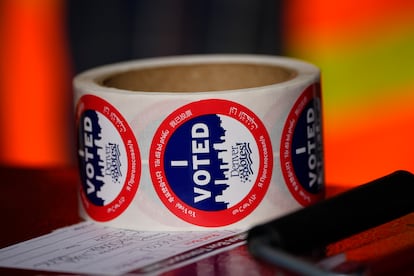
Sign up for our weekly newsletter to get more English-language news coverage from EL PAÍS USA Edition
Tu suscripción se está usando en otro dispositivo
¿Quieres añadir otro usuario a tu suscripción?
Si continúas leyendo en este dispositivo, no se podrá leer en el otro.
FlechaTu suscripción se está usando en otro dispositivo y solo puedes acceder a EL PAÍS desde un dispositivo a la vez.
Si quieres compartir tu cuenta, cambia tu suscripción a la modalidad Premium, así podrás añadir otro usuario. Cada uno accederá con su propia cuenta de email, lo que os permitirá personalizar vuestra experiencia en EL PAÍS.
¿Tienes una suscripción de empresa? Accede aquí para contratar más cuentas.
En el caso de no saber quién está usando tu cuenta, te recomendamos cambiar tu contraseña aquí.
Si decides continuar compartiendo tu cuenta, este mensaje se mostrará en tu dispositivo y en el de la otra persona que está usando tu cuenta de forma indefinida, afectando a tu experiencia de lectura. Puedes consultar aquí los términos y condiciones de la suscripción digital.
More information
Archived In
Últimas noticias
The life of a delivery driver in China: ‘Many people don’t know how an order can arrive at their home in just one day’
Maude Apatow, from acting in ‘Euphoria’ to directing: ‘There are many films that you can tell weren’t written by someone young’
Mexico’s missing people crisis casts a shadow over World Cup venue
Helen Levitt, the photographer who captured the theater of the everyday
Most viewed
- Christian Louboutin: ‘Young people don’t want to be like their parents. And if their parents wear sneakers, they’re going to look for something else’
- US sanctions against jailed cartel leader ‘El Marro’ highlight Mexico’s lack of control over its prisons
- Cartels in Mexico take a leap forward with narco-drones: ‘It is criminal groups that are leading the innovation race’
- Liset Menéndez de la Prida, neuroscientist: ‘It’s not normal to constantly seek pleasure; it’s important to be bored, to be calm’
- ‘El Limones’ and the growing union disguise of Mexican organized crime
